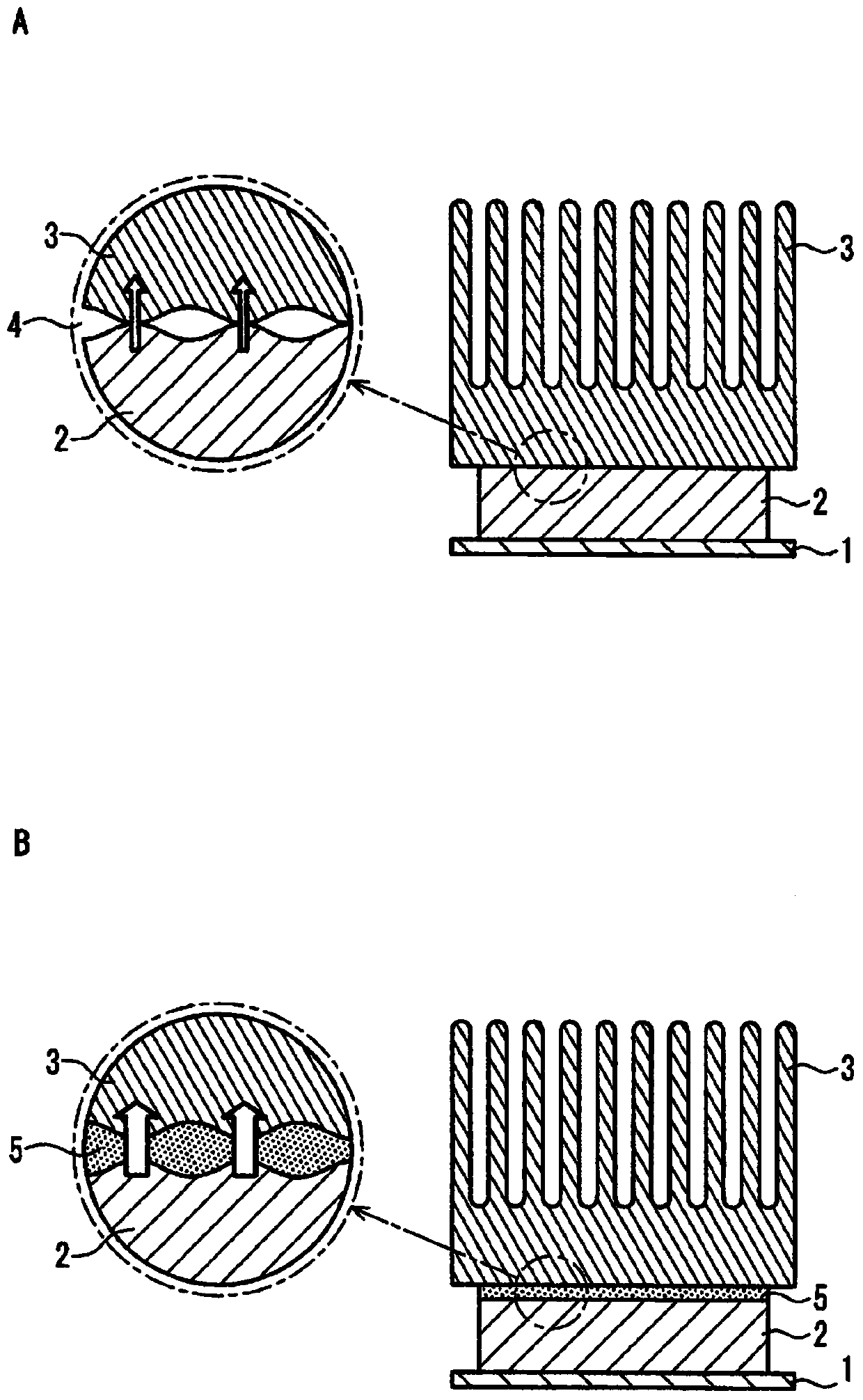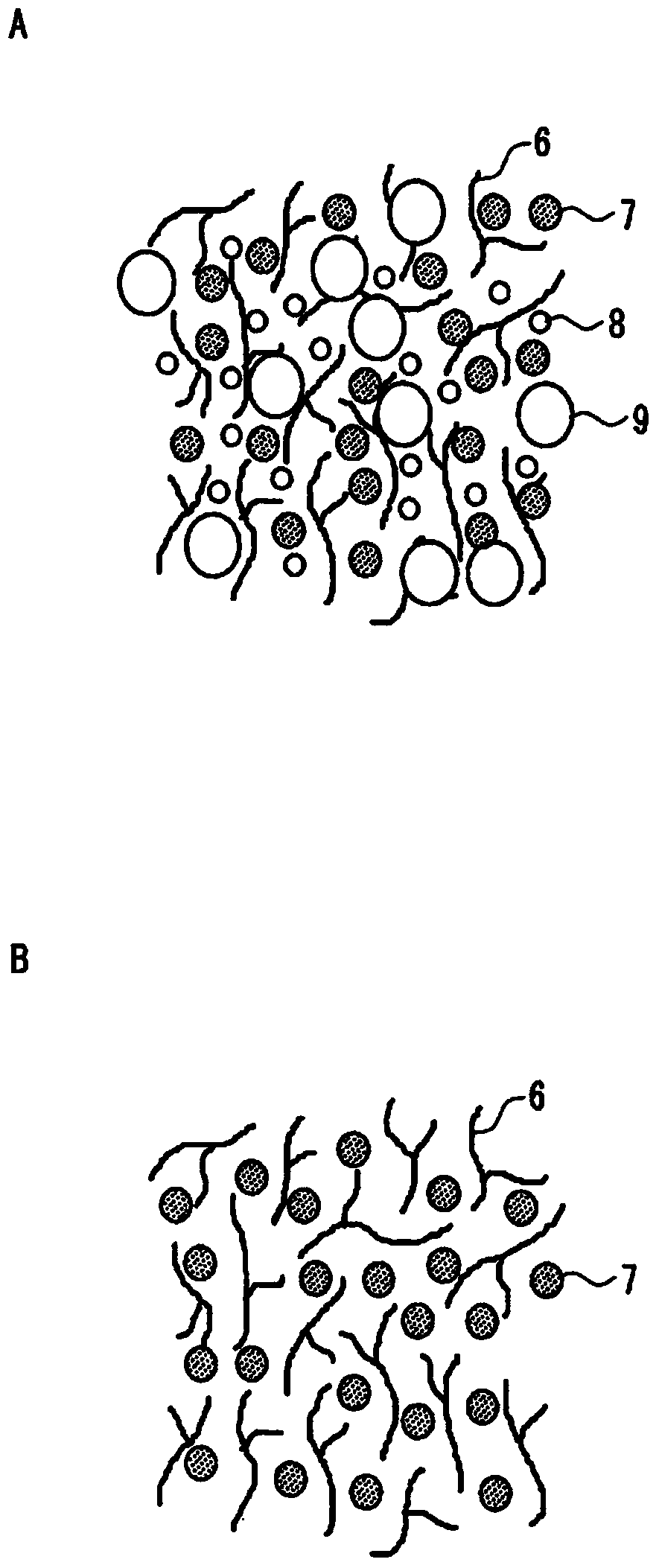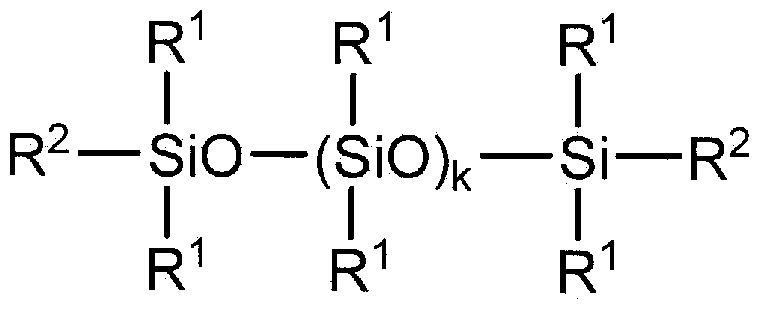Putty-like heat transfer material and method for producing same
A manufacturing method and technology of putty, which are applied in the directions of heat exchange materials, chemical instruments and methods, electrical components, etc., can solve the problems of reduced fluidity, the addition amount of inorganic particle filling materials is set to a large amount, and its own shape retention is low. , to achieve the effect of good liquidity
- Summary
- Abstract
- Description
- Claims
- Application Information
AI Technical Summary
Problems solved by technology
Method used
Image
Examples
Embodiment 1
[0090]
[0091] Two-component room temperature curing silicone rubber (two-component RTV) as a silicone component is weighed so that the mass ratio of liquid A: liquid B reaches a ratio of 7:3 in CF5036 (manufactured by Dow Corning Toray Silicone Co., Ltd.). "A solution (contains a polysiloxane base polymer component containing vinyl groups at both ends (called Vi-based component) and a Pt catalyst component, and the Vi-based component is contained in the same amount as the Vi-based component of B liquid) and B liquid (Si-H group: Vi group is 1:1 in terms of molar ratio, including an organopolysiloxane containing an average of 2 or more hydrogen atoms bonded to silicon atoms in 1 molecule as a crosslinking component (referred to as Si-H-based components), and Vi-based components). As for all the liquids A and B, the Si—H group was 0.3 mol with respect to 1 mol of the Vi group. Moreover, (a)-(c) component of this invention was previously added to "CF5036".
[0092]
[009...
Embodiment 2
[0112] In Example 1, it experimented similarly to Example 1 except having set A liquid:B liquid=8:2. The amount of organopolysiloxane containing an average of 2 or more hydrogen atoms bonded to silicon atoms in one molecule of the crosslinking component of liquid B was 0.2 mol per 1 mol of silicon atom-bonded alkenyl groups in liquid A.
[0113] The resulting putty-like heat transfer material is easily extruded from a tube or syringe and has self-shape retention in a standing state. In addition, dissolution also occurred in the dissolution test with the same solvent as in Example 1. Furthermore, the physical properties are as follows.
[0114] Viscosity: 1,500Pa·s (precision rotational viscometer RotoVisco (RV1), 25°C, shear rate 1 / s)
[0115] Thermal conductivity: 3.2W / m K (ASTM D2326, hot plate method (TPA-501))
Embodiment 3
[0117] In Example 1, it experimented similarly to Example 1 except having set A liquid:B liquid=6:4. The amount of organopolysiloxane containing an average of 2 or more hydrogen atoms bonded to silicon atoms in one molecule of the crosslinking component of Liquid B was 0.4 mol per 1 mol of silicon atom-bonded alkenyl groups in Liquid A.
[0118] The resulting putty-like heat transfer material is easily extruded from a tube or syringe and has self-shape retention in a standing state. In addition, dissolution also occurred in the dissolution test with the same solvent as in Example 1. Furthermore, the physical properties are as follows.
[0119] Viscosity: 4,000Pa·s (precision rotational viscometer RotoVisco (RV1), 25°C, shear rate 1 / s)
[0120] Thermal conductivity: 3.2W / m K (ASTM D2326, hot plate method (TPA-501))
PUM
| Property | Measurement | Unit |
|---|---|---|
| particle size | aaaaa | aaaaa |
| particle size | aaaaa | aaaaa |
| particle size | aaaaa | aaaaa |
Abstract
Description
Claims
Application Information
 Login to View More
Login to View More - Generate Ideas
- Intellectual Property
- Life Sciences
- Materials
- Tech Scout
- Unparalleled Data Quality
- Higher Quality Content
- 60% Fewer Hallucinations
Browse by: Latest US Patents, China's latest patents, Technical Efficacy Thesaurus, Application Domain, Technology Topic, Popular Technical Reports.
© 2025 PatSnap. All rights reserved.Legal|Privacy policy|Modern Slavery Act Transparency Statement|Sitemap|About US| Contact US: help@patsnap.com



